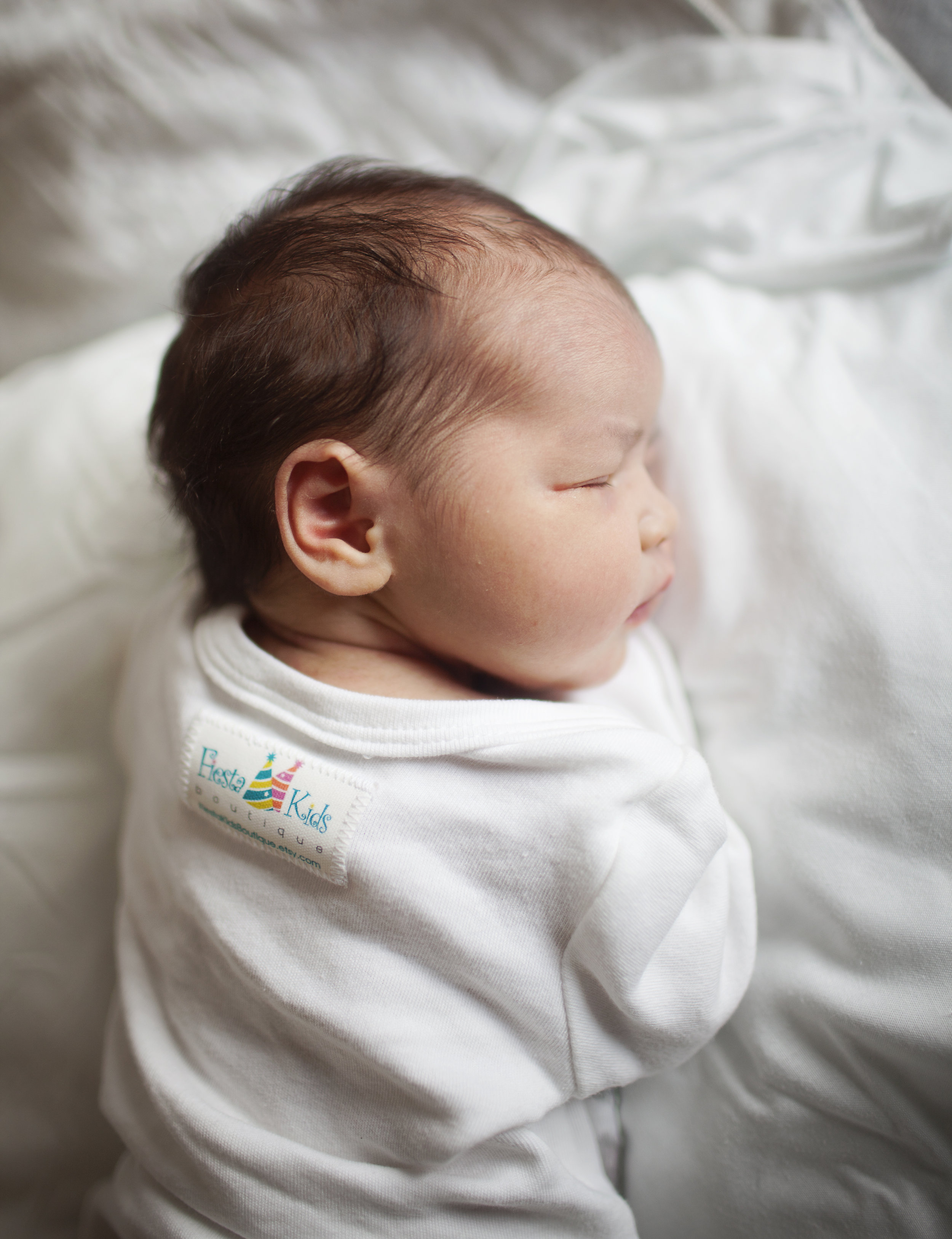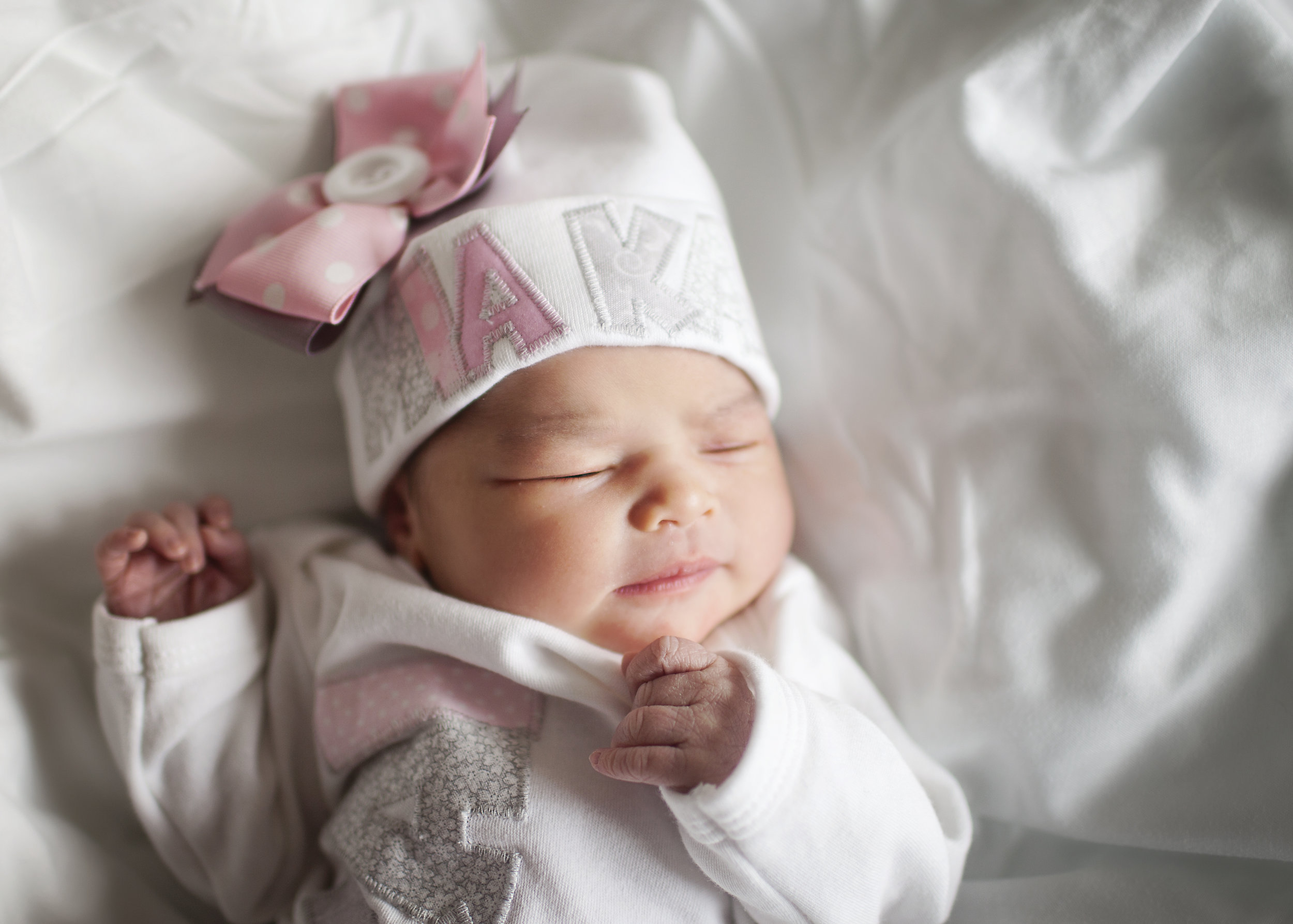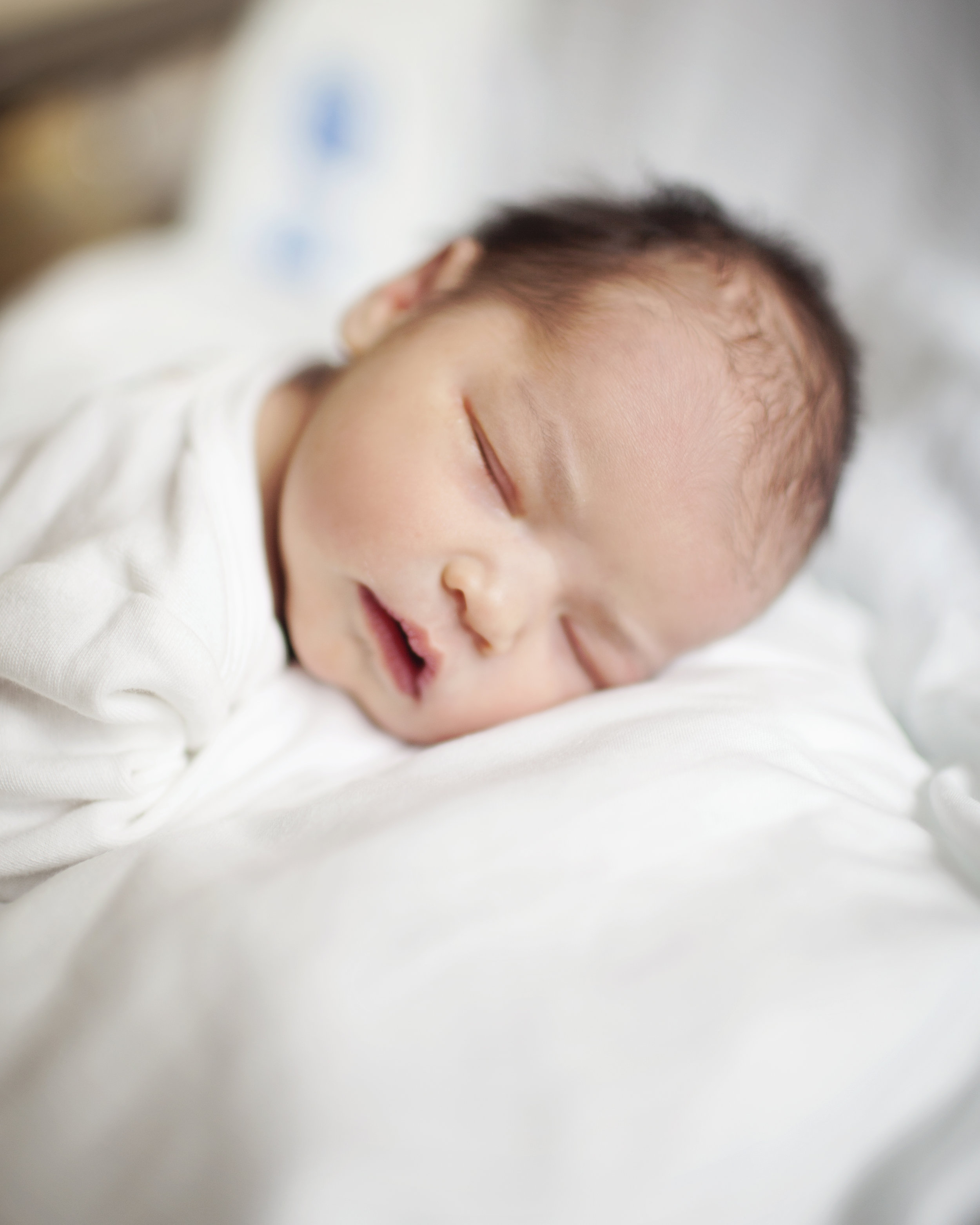If you're following along with the 2017 Scripture Memory / Dwell Richly printable, here's the verse for week 6:
Jesus said to her, “I am the resurrection and the life. Whoever believes in me, though he die, yet shall he live, and everyone who lives and believes in me shall never die. Do you believe this?” John 11:25-26
"You may have noticed that her head is shaped a little funny..." our pediatrician said to us the morning we were discharged from the hospital. Mia Kai was three days old.
"No, but we did notice she has a lot of hair on her shoulders and back. Is that normal?" I asked him as JD and I laughed. My brother was born with a cone head so I was expecting that Mia Kai would have some kind of funny shaped head. It seemed like one of those 'normal abnormalities' the nurse mentioned during our childbirth classes.
Dr. Patz laughed and said, "It should round out over the next few days but if not, I'll check it again at her two week appointment."
Cue two week appointment. We walk in with our LONG list of questions. Questions about spit up, cradle cap, her belly button stump, noises she makes, crying, feeding, bathing, best way to clip fingernails, taking her on walks outside (because you know, it's allergy season). Of course, we asked if someone in the office (Dr. Patz or the nurses) could take her band-aid off from when we were at the hospital too. Neither of us had the guts to remove it. Ha!
Our pediatrician is an amazing doctor with the best bedside manner. He somehow tells us that those aren't things to worry about while also being super lighthearted about it. Like when I asked if my stye would be contagious to her and he said, "Only if you look at her." He helps us to see that most things aren't a big deal. He tells us we're doing a great job - she's still alive and she's growing!
But then I asked him to check out her head shape again. We could tell something was wrong as he quietly felt around her head. "Let's get a CT scan on this just to make sure. It seems like it may be Craniosynostosis but let's get the scan to check it out."
"...And all the people among whom you are shall see that work of the Lord, for it is an awesome thing that I will do with you." Exodus 34:10
This was the Dwell Richly verse for that week. Honestly, when I read through it again after the appointment, my heart dropped. I knew she would be diagnosed with Craniosynostosis at that moment. I was filled with terror and hope at the same time. Terror, because our little girl would be diagnosed with something so difficult; and hope, because I knew God would do something amazing in our sweet baby's little life.
Two weeks pass by (dealing with insurance was rough) and we were finally able to get her CT scan, which came back with the diagnosis of sagittal synostosis (a form of Craniosynostosis). Dr. Patz scheduled an appointment for us to meet with a craniofacial specialist and they got us in immediately. Over the month of June, we met with both the plastic surgeon and neurosurgeon.
Prior to our first appointment with Dr. Kelly, JD and I did enough research to know the options for surgery, but not an overload of research to where we'd freak out. The options for surgery are (1) CRV (calvarial vault remodeling), also known as the more traditional surgery or (2) minimally invasive endoscopic surgery. One of the articles we read mentioned a surgeon saying he preferred traditional over endoscopic because he could see the child's skull much better with his own eyes rather than through a microscope. After reading that, we decided that the traditional surgery just made more sense from a surgical standpoint. We also liked the idea of quick recovery and no helmet.
There were two appointments prior to Mia Kai's surgery. We met Dr. Kelly, the plastic surgeon, at the first appointment. He confirmed that she had Craniosynostosis and discussed the options of procedures with us. We decided that the traditional surgery still seemed like the best route for MK. He explained that the main risk would be blood loss, but that we would be able to directly donate our blood just in case MK needed a blood transfusion. There's about a 99% survival rate and the doctors there perform this surgery at least once a week. We met with Dr. Bonfield, the neurosurgeon, at the next appointment. He gave us another briefing of the procedure and examined her scans with us, pointing out the problems and how they would fix it.
It's difficult to release control but we felt pretty confident in our doctors' abilities after speaking with them more. We scheduled her pre-op appointment and waited for surgery day.












